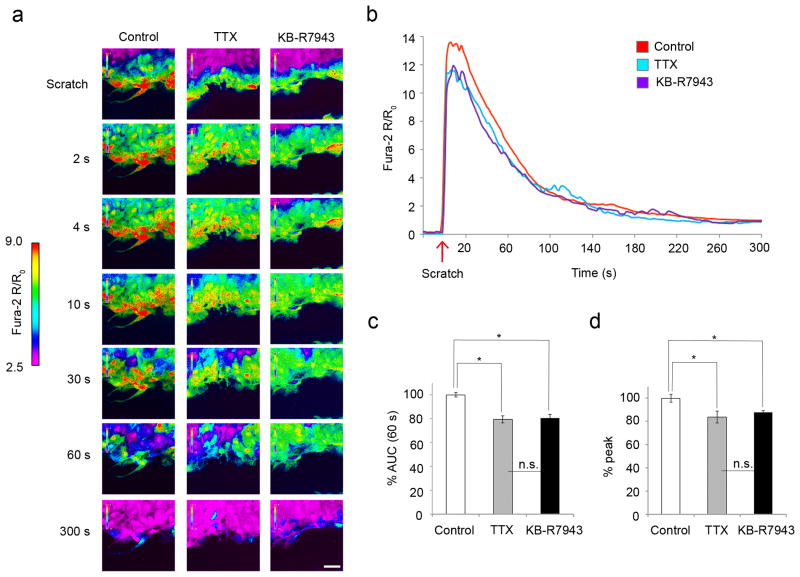Figure 6.
Astrocytes display robust [Ca2+]i response after mechanical injury that is attenuated by TTX and KB-R7943. (a) After a scratch injury, there was a robust [Ca2+]i response, which was propagated through the syncytium of confluent astrocytes and slowly resolved after 2-4 min (first column; see also (b) and Video 1). Application of TTX and KB- R7943 attenuated this [Ca2+]i response (second and third columns, respectively, see also (b) and Videos 2, 3). Color scale represents the ratio of fluorescent signals induced by 340 and 380 nm excitation in cells loaded with Fura-2 AM. Scale bar, 50 µm. (b) TTX and KB-R7943 both attenuated the initial [Ca2+]i increase after injury, particularly within the first 60 s. (c) Compared to untreated scratched astrocytes (n=7 experiments, 70 cells total), TTX decreased the 60 s AUC by 21 ± 5% (n=3 experiments, 30 cells total), while KB-R7943 decreased the 60 s AUC by 20 ± 1% (n=3 experiments, 30 cells total). (d) TTX decreased the peak [Ca2+]i by 16 ± 3%, while KB-R7943 decreased the peak [Ca2+]i by 12 ± 3%. All data was taken from cells within the first 50 µm (3-4 cells deep) from the scratch. *p<0.05; n.s., not significant.

